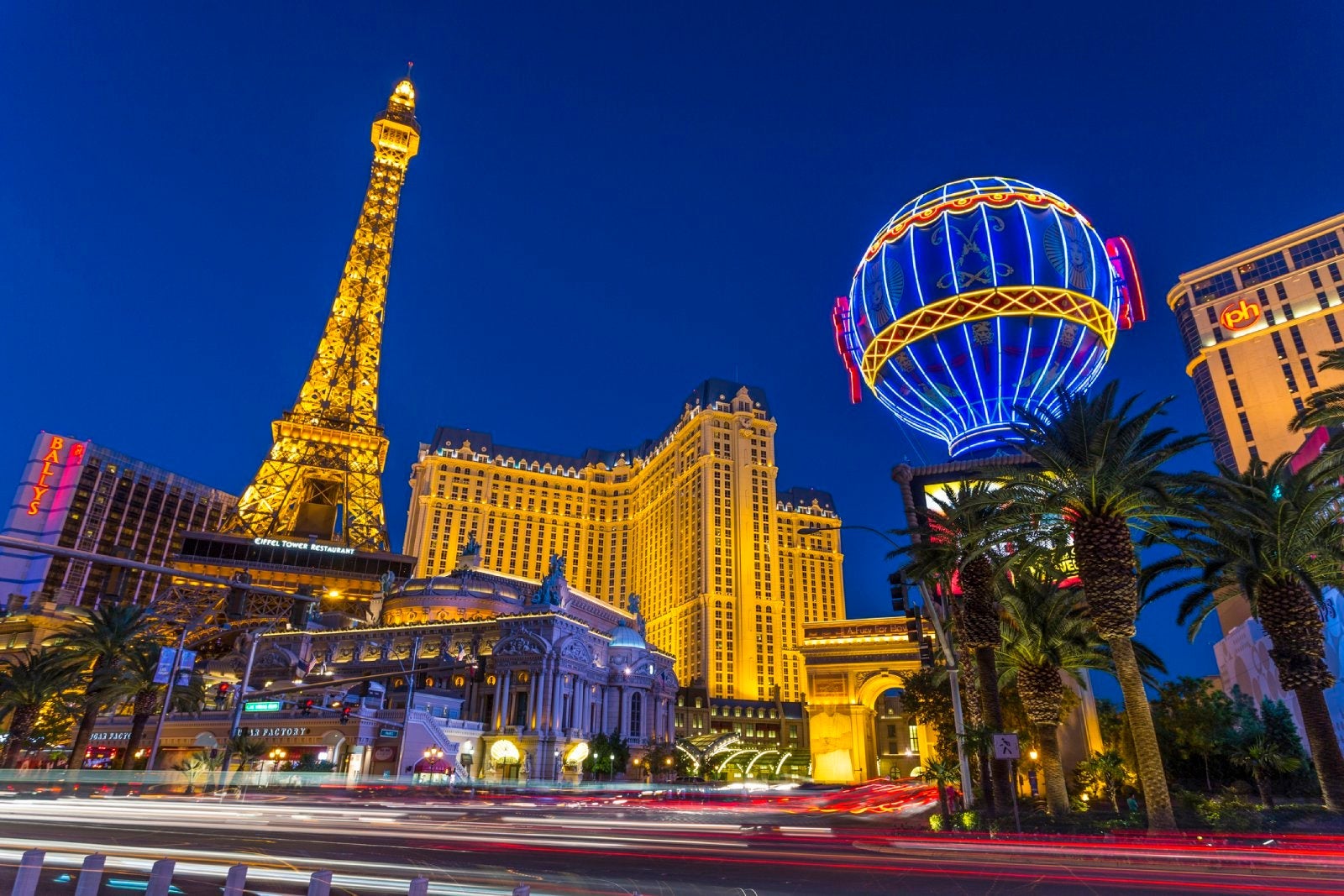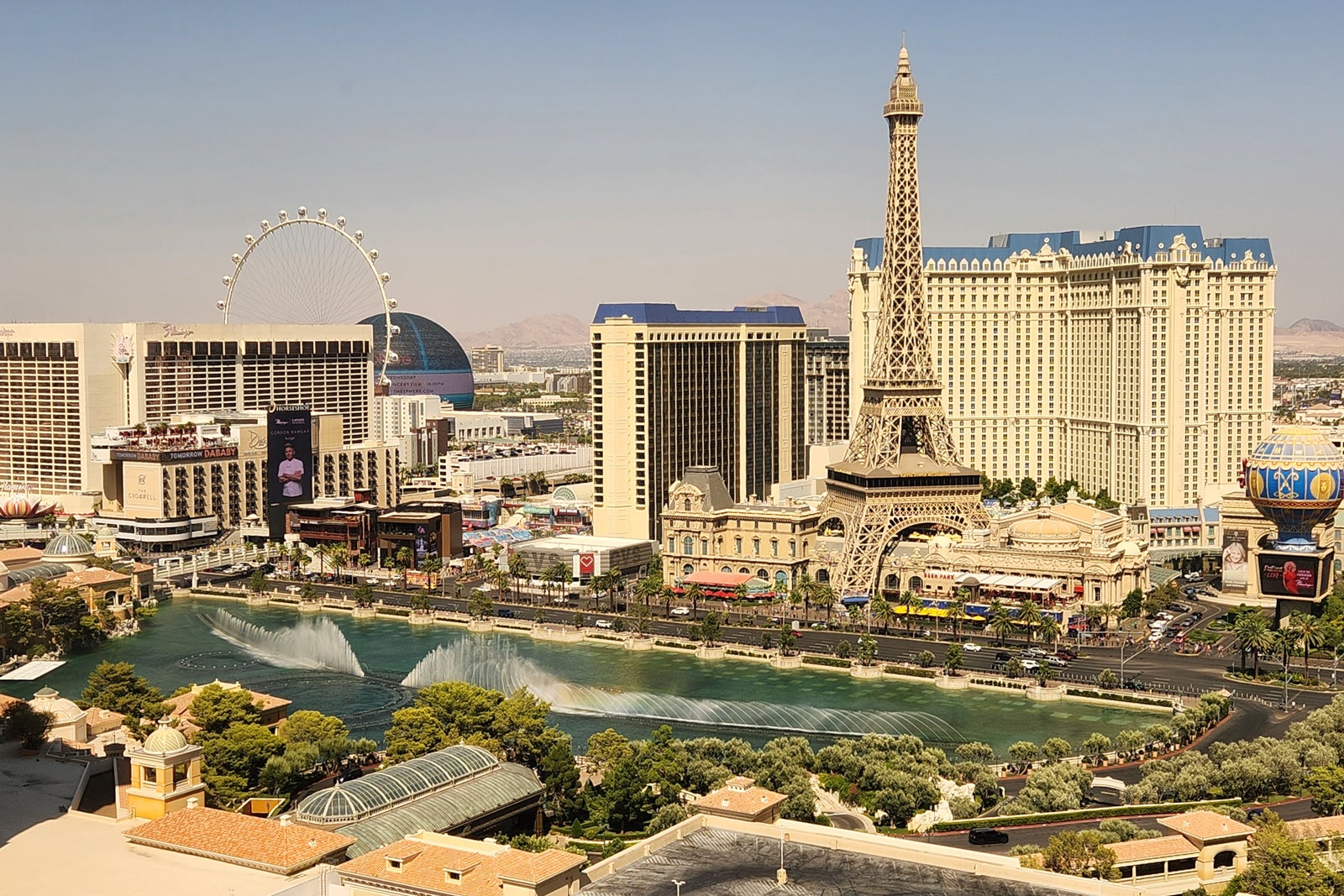I normally love planning my travel down to the little details. It’s exciting to decide in advance where to eat and how to get there, and make sure I don’t miss out on any must-see sights and attractions.
However, I recently booked a last-minute trip to Las Vegas with a TPG colleague and found myself overwhelmed by the options. Having never visited Sin City before, I struggled to get my head around the sheer number of dining, accommodation, transport and entertainment options.
With little time to put together my weekend plans and without feeling the same enthusiasm or motivation I had for planning more bucket-list vacations, I decided to roll the dice and put my faith in ChatGPT. With a few prompts like dates, interests, budget and prebooked tickets, I let this increasingly popular personal assistant do the research for me.
So how did it go?
Some gambles paid off handsomely, while others were spectacular failures.
Related: I gave ChatGPT complete control of my European city break. Here’s why I wouldn’t do it again
What worked: Easy to read, great ideas on paper
ChatGPT asked a handful of sensible clarification questions as I fed it some basic information about my weekend in Vegas and my personal preferences, such as the type of food I liked eating and how much I wanted to spend on meals.
Within seconds, it was able to lay out a neat, digestible and seemingly logical itinerary for my three-night trip. It also offered to produce a map showing the location of everything it had suggested, so I could see where I would be going each day, which was a handy feature and something I hadn’t considered when planning my travel.
I showed my “AI-tinerary” to TPG’s managing editor of newsletters, Becky Blaine, who is a Las Vegas expert, in advance of my trip.
Reward your inbox with the TPG Daily newsletter
Join over 700,000 readers for breaking news, in-depth guides and exclusive deals from TPG’s experts
She called the itinerary “stellar” for a first-time visitor, so I thought I was off to a good start.
What worked: Fantastic hotel comparisons
I wanted to redeem Hilton Honors points for my stay in Las Vegas, and there were plenty of options available. Based mainly on pricing and locations, I narrowed them down to the Conrad Las Vegas at Resorts World and the Waldorf Astoria Las Vegas and asked ChatGPT to explain the differences and which would be more suitable for my trip, as they cost similar amounts of Hilton Honors points each night.
ChatGPT did a fantastic job of summarizing this quickly, effortlessly and logically for me, with the main differences being that the Waldorf Astoria does not have a casino, has a quieter vibe and is a little more upmarket than the Conrad.
As a first-time visitor to Vegas, I sought the happening, flashy casino experience, so I opted for the Conrad, which proved to be a great choice. I especially loved the vast array of food and beverage options available inside the Resorts World complex, and the pool area was beautifully designed and truly relaxing in the Nevada sunshine.
I saved a lot of time by combing through reviews of both properties using artificial intelligence, and I will definitely be using this again to compare accommodation options in the future.
Related: The best hotels in Las Vegas for a Sin City getaway

What worked: Dining options with suitable suggestions and prices
I had heard horror stories about how this once-affordable destination had become significantly more expensive, and I was keen not to waste a lot of money on food and beverages.
I was impressed with how ChatGPT was able to take my simple desire and find suitable dining options, also providing details such as cuisine, estimated prices and locations within major hotels.
It also identified a few happy hour options that I could explore if I wanted to save money on drinks, including Electra Cocktail Club and Brera Osteria, both at The Venetian Resort Las Vegas.
We ended up going off-script at a couple of bars that weren’t on the itinerary, simply because they “looked fun” as we walked past. When I realized they served $15 beers and $30 cocktails (before tax and tip), I knew I should have paid closer attention to my carefully crafted itinerary.
As my hotel booking included a Hilton Honors Diamond daily food-and-beverage credit, I included this in the ChatGPT prompts, figuring I could save some money each day.
My ChatGPT itinerary added a sensible suggestion that I could grab a snack or welcome drink at Resorts World right after checking in and use this credit, as I was likely to be hungry after the long flight from London.
This was a great way to save some cash before the weekend really kicked off.

What didn’t work: No consideration of major events
I included a prompt that I had booked a rental car for the day to drive out to Valley of Fire State Park for hiking. Distances, even between hotels, can be vast in Las Vegas, so I found a car to collect at Circus Circus Hotel & Casino, which was right next door to Resorts World.
ChatGPT helpfully suggested it was an easy, short walk from the Conrad across the road to Circus Circus. Although I had provided the location and date and time of collecting the car, ChatGPT’s research did not account for a 60,000-person music festival that was opening its gates at the same time at the Las Vegas Festival Grounds, which is very close to Circus Circus and where many festivalgoers had opted to stay.
As a result, I encountered absolute chaos, with thousands of music fans streaming through the hotel, the hotel car park (where the vehicle was) and nearby roads. It also took significantly longer to drive out of and back into Vegas as there were multiple road closures, diversions and very heavy traffic, which threw our schedule off at both the start and end of the journey.
I wish ChatGPT had been savvy enough to realize that this major event, which coincided with my specific location at that time, would affect our itinerary.
Related: The latest attraction in Vegas? Dynamic pricing at hotel lobby shops

What didn’t work: Suggesting the best method of transport
From what little I knew, Las Vegas often catches first-time visitors off guard by making them think they can easily walk the length of the Strip, underestimating its actual distance.
Because of this, I asked ChatGPT to suggest the best ways of getting around. It quickly suggested using a ride-hailing service every time I needed to move anywhere, which didn’t seem like the most cost-effective way to spend the weekend. When I queried this and asked about walking distances versus driving, some of the options were a 15-minute walk versus a 7-minute drive, and it seemed strange that anyone would recommend ordering a car when factoring in the wait times and the fact that with these huge hotel casinos, the designated ride-hailing service location was nowhere near the lobby, nor my room.
For example, after checking in at Conrad Las Vegas, I had to get to Treasure Island Hotel & Casino, where I had tickets to a Cirque du Soleil show at 6:30 p.m. Friday. I’m glad I ignored the initial ChatGPT advice to take an Uber or Lyft because:
- It was an easy, flat 25-minute walk (I could see Treasure Island from my room at the Conrad).
- The timing was during sunset in October, when the weather was perfect and the “golden hour” lighting spectacular, for my first-ever foray onto the famous Las Vegas Strip.
- It was during the evening traffic rush hour, when it might take some time for a car to arrive at the hotel, I’d need to allow extra time for traffic (or risk missing the start of the show), and the cost of the ride during this peak time could be higher than usual.
Instead, I took a magical sunset walk along the Strip, which was great to stretch my legs after the long flight.

What didn’t work: En route was not en route
The biggest ChatGPT fail of my Las Vegas weekend was during our drive to Valley of Fire. While the state park itself is spectacular, highly recommended and well worth the hour or so drive from the city, I had asked ChatGPT to recommend somewhere to stop on the way back to the city to grab some lunch after our hike.
Adding prompts that I would like a themed diner experience, it quickly suggested Cablp, owned by famous magician Criss Angel. This sounded like a good idea, but it wasn’t until we put the diner’s name into Google Maps after our hike that we realized it was most definitely not “en route to the city” as my ChatGPT itinerary had promised, but rather a 20-minute drive in the opposite direction.
We weren’t interested in adding 40 minutes of driving to get a burger, so we had to find another option at the last minute that was actually en route back to the city.
I’m mystified as to why ChatGPT would consider a 20-minute drive beyond the destination to be “en route.”

What didn’t work: Vegas isn’t the best destination for a structured itinerary
Ultimately, my biggest lesson from using ChatGPT for a long weekend was that Sin City wasn’t the right destination for a structured, hour-by-hour itinerary. While ChatGPT provided detailed instructions, it proved too rigid for a city where we threw caution to the wind.
After a few free-pour-strength cocktails and some wins on the roulette table, we soon forgot the itinerary in favor of simply seeing where the evening would take us.
Additionally, since I was traveling with someone who had briefly reviewed the itinerary but not contributed significantly to it, it didn’t make sense to constantly check ChatGPT for instructions and force my colleague to follow the itinerary exactly; rather, I could simply ask them what they preferred.
I expect that using ChatGPT to create a travel itinerary would work better for solo travelers, who don’t need to check in with what others want to do, as well as for destinations where sticking to strict schedules is more appropriate, such as Tokyo or perhaps Germany.
What did ChatGPT learn from this experience?
I loaded these thoughts into ChatGPT and asked the platform to provide some commentary on my scorecard of what worked and what didn’t.
Here’s what it had to say:
- Thanks for the thoughtful debrief. The plan was scaffolding, not a script. We iterated around your constraints so the framework could flex while you improvised.
- Regarding transportation, the initial itinerary suggested using a ride-hailing service. After you asked, it converted rides under 20 minutes to walking and pinned routes on a map, so you could choose live instead of defaulting to cars.
- On the Circus Circus pickup: real‑time event detection (e.g., the music festival) wasn’t enabled unless we were asked to browse local calendars; fair critique — I should proactively flag major‑event zones around pickup points.
- On “en route” to Valley of Fire: you requested a themed diner; choices are sparse on that corridor. CABLP fit the brief but was a detour; the map exposed that. I should have labeled it clearly as optional with the distance noted.

Bottom line
Sure, I probably could have squeezed a bit more in and saved a few more dollars by following my ChatGPT Las Vegas itinerary to the letter, but I ticked off the main items and had an absolute blast for my first visit to Sin City.
I’m keen to return, perhaps next year, but I’d also like to explore more of the old side of Vegas next time. While it was decadent staying at Conrad and attending shows at the glittering Bellagio Resort & Casino and dining at the Venetian, I was charmed by the kitsch character of the likes of Circus Circus and Excalibur Hotel & Casino, not to mention they would be significantly cheaper than where I stayed.
The buzzing Fremont Street Experience was really well done, and bouncing around the Golden Nugget Hotel & Casino and making a few wagers Saturday night was terrific fun, even if my memories are a little hazy after the sun went down.
I would definitely turn to ChatGPT for some assistance in putting together the trip next time, but I wouldn’t be looking for hour-by-hour instructions.
My best advice for Las Vegas is to roll the dice and go with the flow, and hopefully you’ll come up trumps.
